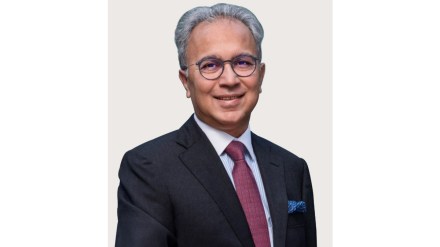In two days of the 30th CII Partnership Summit, the Andhra Pradesh government has signed hundreds of MoUs with corporates attracting investments of over Rs 11 lakh crore and counting. The signed deals are likely to create 1.3 million jobs in the state across several sectors. In a conversation with FE’s Manu Kaushik, president of Confederation of Indian Industry (CII) Rajiv Memani talked about the event’s outcome, corporate performance outlook, weak private capex and consumption trends. Excerpts:
There are MoUs worth over Rs 11 lakh crore signed in past two days, with some big-ticket investments made by companies like Reliance Industries. How do you rate the current CII Partnership Summit as compared to the previous editions?
I would not want to compare one versus the other. I would say this summit has been successful in terms of quality of participation and the number of meetings that have happened. There are three global megatrends currently – geopolitics & geoeconomics, AI and sustainability & energy transition. India has captured these three megatrends quite well. The sessions have been constructed on the basis of how we leverage on some of these megatrends. Eventually it has to reflect in investments, and the economic development of the state. The summit has reposed a lot of confidence in policymakers and investors who are either influencers or active participants in the investments in the state.
Do you expect the investment momentum to continue even after the summit?
There is always a scope to attract more investment. As far as the current chief minister is concerned, there is nothing that makes him feel satisfied. There is a sense of urgency that he has to execute his ideas.
In the second quarter of FY26, corporate India has recorded robust growth in financial performance with many large companies doubling their profits as compared to the last year. What is your outlook on the second half of FY26 in terms of corporate performance?
India is expected to outperform its GDP projections this year. The government reforms, political stability, opening up of newer areas, and the GST reforms are giving positive signals. The strength that is coming through the rural sector is encouraging. We did have some hiccups because of the geopolitical issues related to tariffs earlier this year, but India has now moved on. In that sense, I am positive on the overall outlook for the next two quarters.
Despite pick-up in consumption after GST rationalisation, and better corporate profitability, the private capex continues to remain subdued. Why?
It’s due to our own constraints like supply chain, inability to get approvals, and inability to move fast. It’s our own constraints that bind capex.
There has been a boost in consumption due to GST rate cuts. Do you think it will sustain over a long period of time?
This (rate cuts) give more money in the hands of the consumers, but that is a one-time event. One has to look at growth 12 months from now when people would have digested this. Eventually, there has to be more jobs, higher GDP growth, and better distribution of income. One of the ways to achieve that is through constant reforms from the government, and constant investments in capex, R&D from the private sector.
